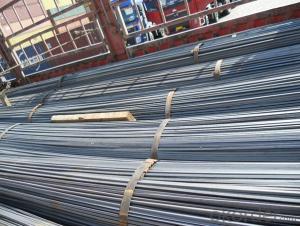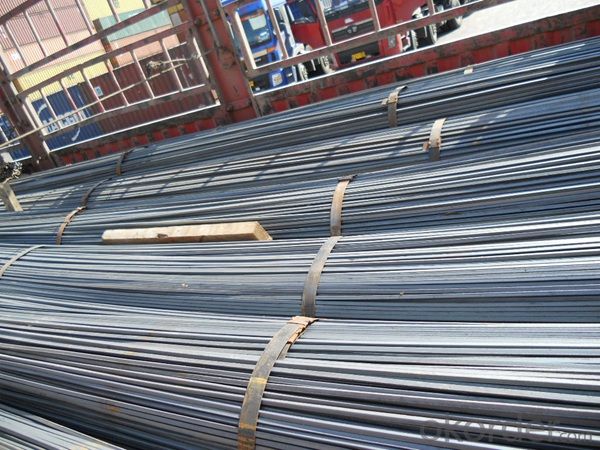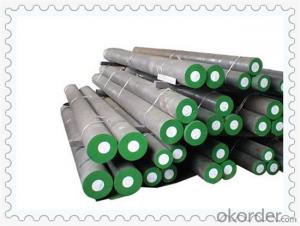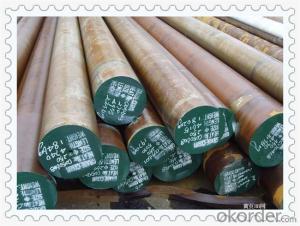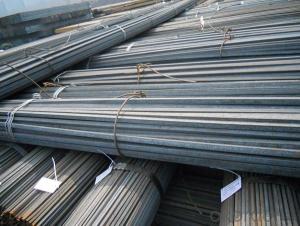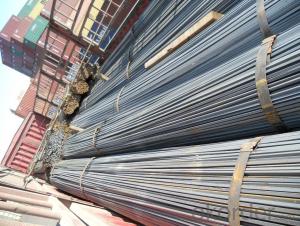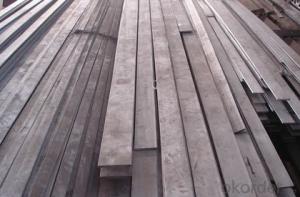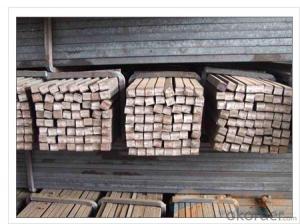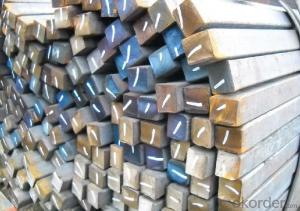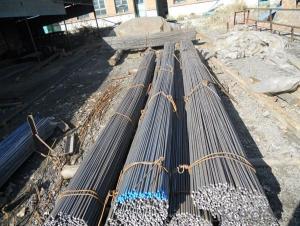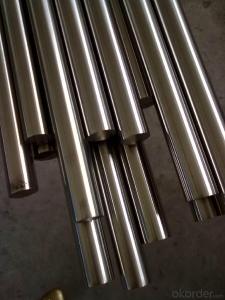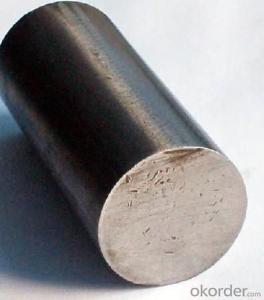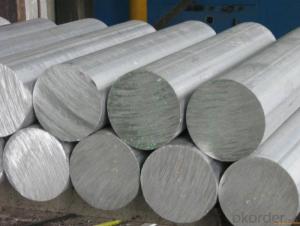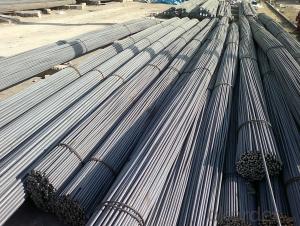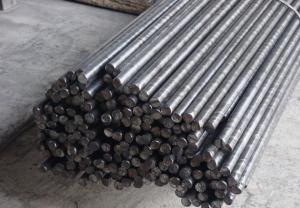Mild Hot Rolled Steel Square Bars for Structure
- Loading Port:
- Tianjin
- Payment Terms:
- TT or LC
- Min Order Qty:
- 25 m.t.
- Supply Capability:
- 200000 m.t./month
OKorder Service Pledge
OKorder Financial Service
You Might Also Like
Product Description:
OKorder is offering Mild Hot Rolled Steel Square Bars for Structure at great prices with worldwide shipping. Our supplier is a world-class manufacturer of steel, with our products utilized the world over. OKorder annually supplies products to European, North American and Asian markets. We provide quotations within 24 hours of receiving an inquiry and guarantee competitive prices.
Product Applications:
-The Mild Hot Rolled Steel Square Bars for Structure is normally used as structure steel.
-Row material for other structure steel like steel angles, channels, I-beams, H-beams, etc…
Product Advantages:
OKorder's Mild Hot Rolled Steel Square Bars for Structure are durable, strong, and resist corrosion.
Main Product Features:
· Premium quality
· Prompt delivery & seaworthy packing (30 days after receiving deposit)
· Corrosion resistance
· Can be recycled and reused
· Mill test certification
· Professional Service
· Competitive pricing
Product Description:
Length of a side(a, mm) | Theoretical weight(kg/m) | Length of a side(a, mm) | Theoretical weight(kg/m) |
6 | 0.283 | 32 | 8.04 |
7 | 0.385 | *33 | 8.55 |
8 | 0.502 | 34 | 9.07 |
9 | 0.636 | *35 | 9.62 |
10 | 0.785 | 36 | 10.17 |
11 | 0.950 | 38 | 11.24 |
12 | 1.13 | 40 | 12.56 |
13 | 1.33 | 42 | 13.85 |
14 | 1.54 | 45 | 15.90 |
15 | 1.77 | 48 | 18.09 |
16 | 2.01 | 50 | 19.63 |
17 | 2.27 | 53 | 22.05 |
18 | 2.54 | *55 | 23.6 |
19 | 2.82 | 56 | 24.61 |
20 | 3.14 | *58 | 26.4 |
21 | 3.46 | 60 | 28.26 |
22 | 3.80 | 63 | 31.16 |
*23 | 4.15 | *65 | 33.17 |
24 | 4.52 | *68 | 36.3 |
25 | 4.91 | 79 | 38.49 |
26 | 5.30 | 75 | 44.16 |
*27 | 5.72 | 80 | 50.24 |
28 | 6.15 | 85 | 56.72 |
*29 | 6.60 | 90 | 63.59 |
30 | 7.06 | 95 | 70.85 |
*31 | 7.54 | 100 | 78.50 |
Notes:
1, The theoretical weights in the list, base on the density of 7.85 g/cm3.
2, The numbers with *mean that they are not regulars or we don’t offer them.
-The allowed tolerance of Square Steel:
Length of a side(mm) | Allowed Tolerance | ||
Group1 | Group2 | Group3 | |
5.5~7 | ±0.20 | ±0.30 | ±0.40 |
7~20 | ±0.25 | ±0.35 | ±0.40 |
20~30 | ±0.30 | ±0.40 | ±0.50 |
30~50 | ±0.40 | ±0.50 | ±0.60 |
60~80 | ±0.60 | ±0.70 | ±0.80 |
80~110 | ±0.90 | ±1.0 | ±1.1 |
110~150 | ±1.2 | ±1.3 | ±1.1 |
150~190 | ―― | ―― | ±2.0 |
190~250 | ―― | ―― | ±2.5 |
Packaging & Delivery of Mild Hot Rolled Steel Square Bars for Structure:
-Packing Detail: The products can be packed in bundles by steel wires.
-Marks:
1, Tag marks: the tag marks will be tied up to each bundle of the products. The information is usually including supplier’s logo and name, product name, made in China, products’ specifications, the painted color and other information requested by customers.
2, Color marks: we will paint both ends of the bundles of these products to make sure that they are more evident. It’s will be more convenient for the customers to distinguish them at the destination port.
-Delivery Detail: 30~45 working days after receive buyer’s T.T. or L/C.
Transportation:
-The products can be delivered by bulk vessel or by container. As for container, products with the length of 6m will be loaded in 20’ container, with 9m or 12m, in 40’ container.
-The maximum quantity of loading of container is 25 tons.
-The products usually are transported to the nearest port from the production place.
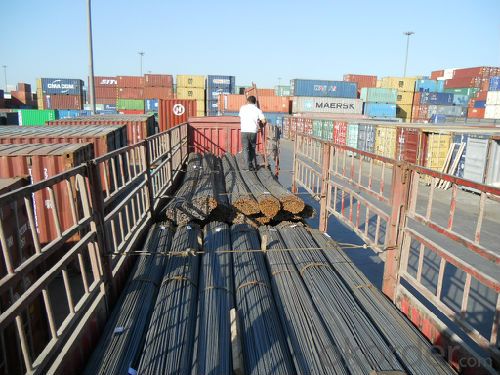
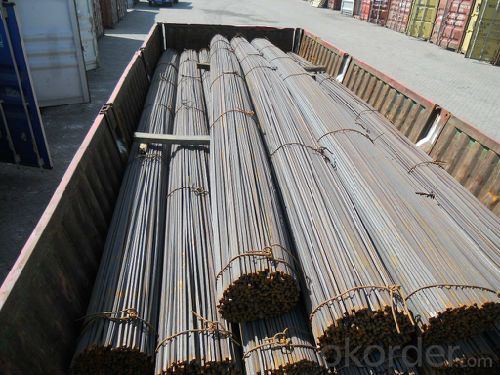
FAQ:
Q1: Why buy Materials & Equipment from OKorder.com?
A1: All products offered byOKorder.com are carefully selected from China's most reliable manufacturing enterprises. Through its ISO certifications, OKorder.com adheres to the highest standards and a commitment to supply chain safety and customer satisfaction.
Q2: Can fit in the containers of 20fts the steel beams of 6M?
A2: No proble, we can put them into the containers in the form sideling.
Q3: The products are invoicing on theoritical weight or on actual weight?
A3: We can do it in both manners, according to the customers' request.
- Q: Are steel round bars suitable for use in the construction industry?
- Yes, steel round bars are commonly used in the construction industry due to their strength, durability, and versatility. They provide structural support in various applications such as reinforcement in concrete, framing, and the creation of beams and columns. Additionally, steel round bars can be easily fabricated, welded, and formed into different shapes, making them a suitable choice for a wide range of construction projects.
- Q: What are the different types of steel round bar surface coatings?
- Some of the different types of steel round bar surface coatings include galvanized coatings, epoxy coatings, powder coatings, and chrome plating.
- Q: Are steel round bars suitable for high-pressure applications?
- Yes, steel round bars are suitable for high-pressure applications. Steel is known for its strength and durability, making it a suitable material for withstanding high pressures. Additionally, steel round bars can be heat treated to further enhance their strength and resistance to pressure.
- Q: How do you measure the hardness of a steel round bar?
- The hardness of a steel round bar can be measured using various methods, with the most common method being the Rockwell hardness test. This test involves applying a specific load to an indenter and measuring the depth of the indentation left on the material's surface. To measure the hardness of a steel round bar using the Rockwell hardness test, the following steps can be followed: 1. Select the appropriate Rockwell scale for the steel being tested. The most commonly used scales for steel are HRC (Rockwell C) and HRB (Rockwell B). 2. Clean the surface of the steel round bar to remove any dirt, oil, or contaminants that could affect the accuracy of the test. 3. Place the steel round bar on a flat and stable surface, ensuring it is properly supported to prevent any movement during testing. 4. Select the appropriate indenter for the chosen Rockwell scale. For HRC, a diamond cone indenter is typically used, while for HRB, a hardened steel ball is used. 5. Apply a preliminary minor load to the indenter, typically 10 kgf (kilogram-force) for HRC and 3 kgf for HRB. This helps ensure proper contact between the indenter and the material's surface. 6. Apply the major load, which is specific to the chosen Rockwell scale. For HRC, it is typically 150 kgf, while for HRB, it is usually 100 kgf. 7. Allow the major load to dwell for a specific period, typically 15 seconds, to ensure proper indentation. 8. Release the major load while keeping the minor load applied. This allows the indenter to partially recover, reducing the depth of the indentation. 9. Measure the depth of the remaining indentation using a microscope or a specialized Rockwell hardness testing machine. The measured value corresponds to the hardness value on the chosen Rockwell scale. It is important to note that the Rockwell hardness test is just one of several methods available to measure the hardness of a steel round bar. Other methods, such as the Brinell hardness test or the Vickers hardness test, may also be used depending on the specific requirements of the application.
- Q: Can steel round bars be used in the production of power tools?
- Yes, steel round bars can be used in the production of power tools. Steel round bars are often used as raw materials for manufacturing various components and parts of power tools due to their high strength, durability, and resistance to impact and wear. These bars can be machined, shaped, and heat-treated to create the necessary components, such as shafts, handles, and gears, that are crucial for the proper functioning of power tools.
- Q: What is the yield strength to tensile strength ratio of a steel round bar?
- The yield strength to tensile strength ratio of a steel round bar is typically around 0.85.
- Q: What are the advantages of using magnesium-alloy steel round bars?
- Using magnesium-alloy steel round bars offers several benefits: 1. They are lightweight, making them ideal for industries that require weight reduction, such as aerospace and automotive. 2. Despite being lightweight, they have a high strength-to-weight ratio, ensuring structural integrity under high loads. 3. They have excellent corrosion resistance, making them suitable for outdoor and marine applications. 4. They are known for their superior machinability, allowing for precise and complex component manufacturing. 5. They effectively dissipate heat, making them ideal for applications that require heat management. 6. They contribute to a more sustainable and environmentally friendly manufacturing process due to magnesium's recyclability. 7. While they may have a higher initial cost, their lightweight nature leads to cost savings in transportation and installation. Additionally, their corrosion resistance and durability reduce long-term maintenance and replacement costs. In conclusion, magnesium-alloy steel round bars offer advantages such as lightweight, high strength-to-weight ratio, corrosion resistance, machinability, heat dissipation, eco-friendliness, and cost-effectiveness. They are highly desirable for industries that prioritize weight reduction, performance, and durability.
- Q: What are the different types of finishes available for steel round bars?
- Steel round bars offer a variety of finishes, each with its own unique properties and appearance. 1. Mill Finish: The most commonly used finish is the mill finish, where the steel is left in its natural state after rolling and cooling. This results in a rough texture and the possibility of surface imperfections. 2. Hot Rolled Finish: Achieved by heating the steel to high temperatures and shaping it through rolling. This finish provides a smooth surface and is typically used in applications where aesthetics are not a priority. 3. Cold Drawn Finish: Involves pulling the steel through a die to reduce its diameter and increase its length. This finish offers a smooth surface, improved dimensional accuracy, and tighter tolerances. 4. Polished Finish: Steel round bars can be polished to achieve a smooth and reflective surface. This is done using abrasive materials or compounds to remove imperfections and enhance appearance. 5. Ground Finish: A process that involves removing a thin layer of material from the steel surface using abrasive grinding wheels. This creates a smooth and even finish suitable for applications that require precise dimensions and tight tolerances. 6. Coated Finish: Steel round bars can be coated with different materials for added protection against corrosion or to enhance appearance. Common coatings include galvanization, which applies a layer of zinc, and powder coating, which provides durability and a decorative finish. When choosing a finish for a steel round bar, it is important to consider the specific application and desired properties. Factors such as corrosion resistance, aesthetics, dimensional accuracy, and surface quality should be taken into account.
- Q: Can steel round bars be used in the manufacturing of bicycles?
- Indeed, bicycles can be manufactured using steel round bars. These bars are commonly utilized in multiple aspects of bicycle construction, including the frame, handlebars, cranksets, and seatposts. Steel, being a robust and enduring material, can withstand the strains and pressures associated with cycling. Moreover, it is comparatively affordable when compared to alternatives like carbon fiber. By employing steel round bars, the necessary strength and stability required for a bicycle's structural components are guaranteed, thereby ensuring a secure and dependable ride. Furthermore, steel can be easily manipulated and shaped to conform to the specific design prerequisites of a bicycle, making it a versatile material for manufacturing purposes. All in all, the bicycle industry frequently favors steel round bars due to their resilience, sturdiness, and cost-effectiveness.
- Q: Can steel round bars be recycled?
- Yes, steel round bars can be recycled. Steel is a highly recyclable material, and this includes steel round bars. Recycling steel round bars involves collecting the scrap material, melting it down, and then reshaping it into new steel products. This process can be done repeatedly without compromising the quality or strength of the steel. Recycling steel round bars not only conserves natural resources but also reduces energy consumption and greenhouse gas emissions compared to producing new steel. It is an environmentally friendly option that helps to promote sustainability and reduce waste.
Send your message to us
Mild Hot Rolled Steel Square Bars for Structure
- Loading Port:
- Tianjin
- Payment Terms:
- TT or LC
- Min Order Qty:
- 25 m.t.
- Supply Capability:
- 200000 m.t./month
OKorder Service Pledge
OKorder Financial Service
Similar products
Hot products
Hot Searches
Related keywords
